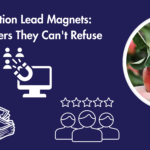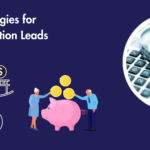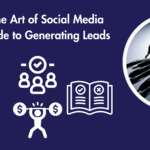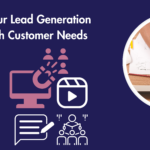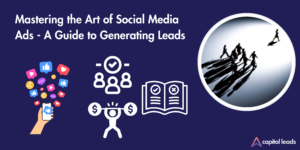What is lead scoring & how does it work?
Lead scoring is like giving grades to your potential customers – the leads – based on how likely they are to buy from you. Imagine each lead as a student in a class.
Some are always raising their hands, eager to participate (showing interest in your products), while others might be quietly sitting at the back (not engaging much).
Your job is to figure out who is most likely to pass the exam (make a purchase).
To start, you and your team decide what matters most when it comes to buying. Maybe it’s how often someone visits your website, whether they open your emails, or if they’ve asked for pricing information.
You choose the actions and behaviours that suggest a lead is getting ready to make a purchase. Each of these actions gets a certain number of points.
For example, visiting a webpage might be 1 point, while downloading a pricing sheet could be 5 points.
When a lead takes an action, they get points. Over time, the more points they get, the hotter, or more likely to buy, they become.
Once they hit a point threshold you’ve set, they get flagged as a high-priority lead, meaning it might be time for your sales team to reach out to them directly.
The magic of lead scoring is that it helps your sales team focus on leads who are truly interested, avoiding spending time on those who are not quite ready, and making the sales process smoother and more efficient.
So, in short, lead scoring is your guide to knowing which leads are most likely to make a purchase.
How to Identify Lead Qualification Criteria
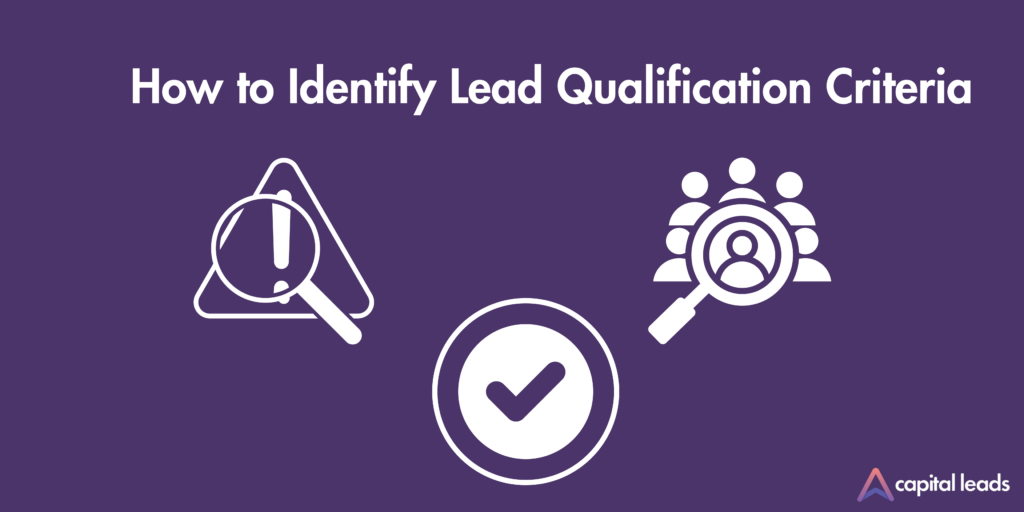
Firstly, figuring out the best lead qualification criteria starts with really getting to know your usual customers.
It’s a bit like being a detective – looking at your existing customers, seeing who buys from you, and asking why they chose your product.
Spot the shared details among them such as what job they do, the kind of companies they work in, and the problems they face that your product helps to solve.
Creating a kind of sketch or picture of your typical customer will help you easily identify similar potential customers in the future.
It’s all about understanding how people behave before they make a purchase. Imagine your website or store like a physical space. Watch where they go, what they look at, and what they pick up or click on.
Do they read emails from you? Do they download guides from your website? Maybe they attend your web events? Recognizing what actions or steps they often take before buying something will give you clues about which leads are warming up and getting ready to buy.
Lastly, make sure the leads have what they need to make a purchase and that your product is a good fit for them.
It’s a two-way street – they should have the budget and a real need for your product, and your product should be the right solution for their problem.
Keeping a simple checklist, like the BANT method which checks Budget, Authority, Need, and Timing, can be a handy tool to quickly see if a lead has good potential to convert into a customer.
Always keep in touch with your sales team, and keep tweaking your method based on what’s working and what’s not, ensuring your energy is always focused on the most promising leads.
Benefits of lead scoring
Every business owner knows the pain of wasting time on leads that never convert. Why invest hours, resources, and heartbeats on maybes when you can zero in on the sure things? Find out how lead scoring could be beneficial for your business
Boosted Sales
Imagine a room filled with potential buyers, and you have the secret to distinguish between those just browsing and those clutching their credit cards, ready to purchase.
With lead scoring, you’re arming your sales team with that exact secret. By focusing on leads primed for buying, sales skyrocket. Think of it as having a crowd and knowing exactly whom to pitch to for a surefire sale.
Better Conversions
Each interaction a lead has with your brand is like a hint, a nudge. Some hints are more obvious, like downloading a product brochure. Others, subtler, like a casual website visit. Lead scoring deciphers these hints.
As these interactions add up, so do their scores, identifying those teetering on the edge of conversion. The outcome? You swoop in at the right moment, and voilà, conversion rates shoot up.
More Revenue
Revenue isn’t just about quantity; it’s about quality. Chasing every lead can be like filling your basket with both ripe and rotten fruits. Sure, there’s volume, but what’s the real value?
Lead scoring separates the ripe from the rotten. By pouring resources into leads that truly count, each sales interaction holds higher potential revenue. The maths is simple: high-quality leads mean higher revenue.
Teamwork Across Teams
Lead scoring isn’t just a sales tool—it’s a bridge, a unifier. Marketing brings in the leads, but how does Sales know which ones to prioritise?
With scores attached to leads, there’s no guesswork. Everyone’s on the same page. Teams are synced, understanding exactly which leads are worth the pursuit.
It’s like passing a baton in a relay race – smooth, seamless, and setting the stage for a win.
Precise Targeting
Shotgun approaches? They’re messy and wasteful. But with lead scoring, you’re swapping that shotgun for a sniper’s precision. Based on the scores, you can craft laser-focused campaigns tailored for specific segments.
A lead close to the threshold might need a gentle push with a personalised offer. Another accumulating points steadily? Maybe they’re ripe for a loyalty program invitation. Precision targeting means no wasted shots, and every message hits its mark.
For example you’re a solar panel company. Through lead scoring, you’ve identified a group of homeowners who’ve visited your “Benefits of Solar Energy” page multiple times but haven’t requested a quote.
Instead of sending them a generic advertisement, you target this specific group with an email detailing a limited-time offer: “Get a free solar energy audit for your home!”
By addressing their evident interest with a tailored offer, you’re not just shooting in the dark—you’re hitting the bullseye.
Prioritising Follow-Up with Lead Scoring
Lead scoring isn’t just another business gimmick. It’s the compass for your follow-up strategies.
You can’t just reach out to every lead willy-nilly. Why? Because time is money, and every second spent on a cold lead is a potential missed opportunity with a warm one.
So, how do you know who’s primed and ready for that all-important follow-up? Lead scoring. It’s not just about assigning random points. It’s about understanding the nuances of your leads’ actions.
By allocating specific scores based on those actions, you’re essentially sifting through the crowd and highlighting those who are waving the “I’m interested!” flag.
Prioritising follow-up with lead scoring is like having an insider’s scoop on who’s genuinely keen. This approach ensures you’re not just making contact, but making meaningful connections that count.
Imagine you’re a solar panel company flooded with inquiries every day.
John clicks on your website, browses briefly, and leaves – he’s scored a ‘2’.
Meanwhile, Sarah downloads an ebook on “Maximising Solar Efficiency,” watches a webinar, and signs up for a newsletter – she’s scored a ‘9’.
Instead of diving into a sea of leads, you immediately know Sarah’s ripe for a personalised follow-up.
Integrating Lead Scoring into Your Sales Process
Your sales process is a meticulously choreographed dance. But without lead scoring? It’s like trying to tango with two left feet.
Now, integrating lead scoring isn’t just about adding another step. It’s about refining the dance. It’s understanding that not every lead takes the same steps or moves at the same rhythm.
When you weave lead scoring into this dance, you’re signalling your sales team on when to twirl or take a step back. It’s about syncing to the beats of your leads’ interests and readiness.
Picture your solar panel company’s sales funnel. As leads flow in, they’re not all at the same stage.
Michael merely reads a blog post about solar benefits – he’s a ‘3’.
On the other hand, Lisa requests a home assessment, compares panel types, and engages in a live chat asking about installation – she’s a ‘9’.
By integrating lead scoring, your sales team instantly knows Lisa is not just warm but sizzling hot, prioritising her for an immediate, tailored sales pitch.
Integrating lead scoring into your sales process ensures that every move you make is in harmony with your leads.
Best Practices for Lead Scoring
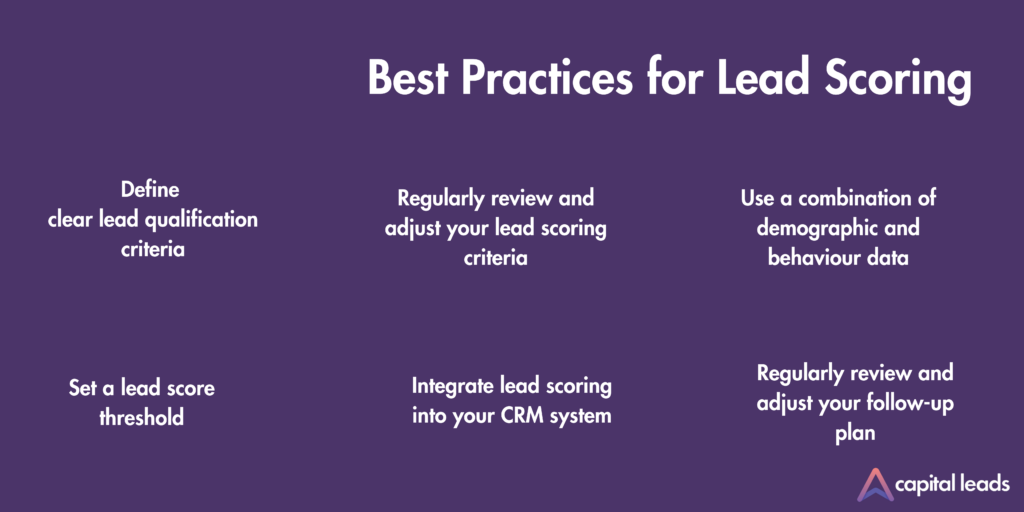
Lead scoring isn’t just a system you toss into your sales process and hope it works.
Sales teams don’t just assign arbitrary numbers and expect conversions to skyrocket. They understand that the essence of lead scoring requires thoughtful strategy and precision.
Your lead scoring strategy can’t be based on mere hunches or generic industry templates. It must be tailored and “spot-on” for your unique audience and business needs.
Implementing it correctly will empower your sales and marketing teams, refining their efforts and ensuring they resonate deeply with potential customers.
A well-executed lead scoring system not only streamlines your sales funnel but also positions your brand as intuitive and customer-centric, elevating your stature in the marketplace. Let’s dive deeper on this topic.
Define clear lead qualification criteria
Lead scoring isn’t just about attaching numbers to actions. You’re not playing a game of pin the tail on the donkey.
Businesses can’t afford to wing it. You need a roadmap. And this roadmap? It’s your lead qualification criteria.
Crafting this isn’t about throwing ideas onto a board. It has to be relevant, direct, and enticing to your specific audience, acting as a magnet that naturally pulls high-quality leads towards a sale.
By defining clear criteria, you make sure that every lead that enters your system is evaluated against a gold standard, positioning your brand as discerning and focused.
Regularly review and adjust your lead scoring criteria
The world of sales and marketing is ever-evolving. What worked yesterday might be out of date tomorrow.
Your lead scoring criteria isn’t a set-it-and-forget-it tool. Over time, it needs a tweak here, a dash more of this, a pinch less of that.
By regularly refining your criteria you make sure it remains compelling, keeping your leads engaged and your conversions high.
Use a combination of demographic and behaviour data
Lead scoring isn’t a one-size-fits-all puzzle. It’s not enough to know who your lead is; understanding what they do is equally crucial.
Blending demographic data with behaviour insights is like creating a tailored suit. It fits, feels right, and looks impeccable.
By merging these data streams, you’re ensuring a holistic view of your leads, enhancing your brand’s ability to anticipate and meet their needs.
Set a lead score threshold
You wouldn’t open your special vintage wine for just any occasion. Similarly, not every lead requires immediate attention.
Determining a score threshold is like setting standards for when it’s time to uncork that bottle. It tells your team when a lead is matured and ready for a personalised touch.
Having a clear threshold ensures that your sales efforts are concentrated and impactful.
Regularly review and adjust your follow-up plan
A static follow-up plan? That’s yesterday’s news. Leads are dynamic, and so should your engagement strategies be.
Imagine if your lead magnet always offered the same value. Over time, it’d lose its allure. Adjusting your follow-up plan ensures it remains enticing, making every touchpoint with your lead a memorable one.
By keeping your plan fluid and fresh, you’re constantly in tune with your audience’s pulse, ensuring continued interest and trust.
Integrate lead scoring into your CRM system
Your CRM system is the nerve centre of your sales operation.
Injecting lead scoring directly into this system isn’t merely an addition—it’s an upgrade. Think of it as adding a supercharger to a performance car.
By doing so, every interaction, every data point becomes enriched with insights, propelling your sales team towards more informed and strategic decisions, and ultimately driving your brand towards unparalleled success.
Common Lead Scoring Mistakes to Avoid
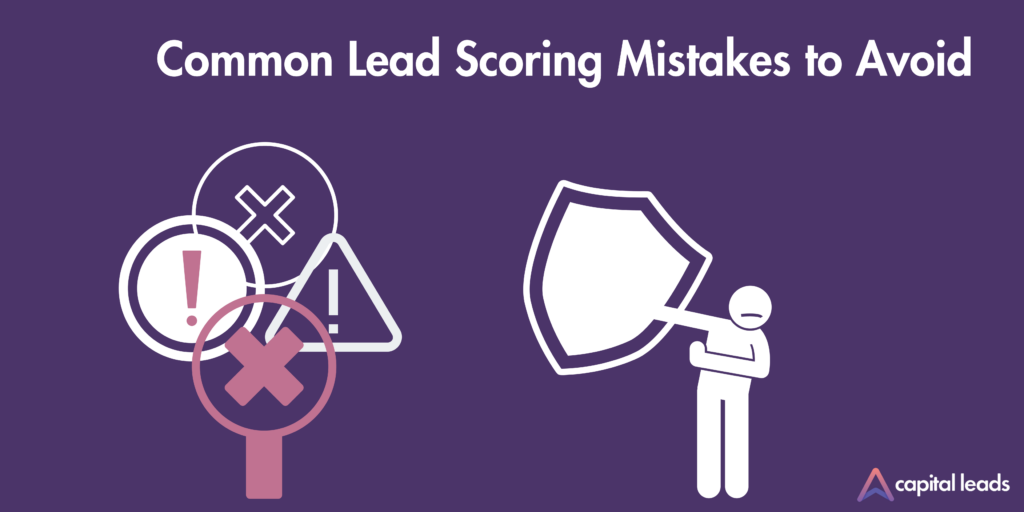
Lead scoring is a crucial element in lead management and marketing automation, as it helps prioritise leads and improve conversion rates.
However, there are several pitfalls that companies can fall into when implementing and managing a lead scoring system. Here are some common mistakes to avoid:
Not Defining Criteria Properly
Not setting clear criteria for scoring or relying solely on demographic factors (like job title) without considering behavioural signals (like email clicks or website visits).
This could look like:
You are a solar company, you give high scores to leads working in construction, thinking they have decision-making power, but ignore whether these leads have shown direct interest in solar solutions, like downloading a product spec sheet or attending webinars.
Being Too Subjective
Scoring leads based on gut feelings rather than objective criteria and data can lead to inconsistencies and inefficiencies.
Example: Your marketing team assumes leads from sunny regions are automatically more interested and gives them higher scores, without analysing their actual engagement or intent.
Not Regularly Updating the Model
The market, products, and customer behaviours change over time. Regularly reviewing and adjusting the scoring criteria is crucial.
Lead scoring models need to adapt to evolving business landscapes, customer behaviours, and emerging market trends.
If the scoring model remains static, it can become outdated and may not accurately represent a lead’s actual value or potential. Regularly revisiting and refining the model ensures its continued relevance and effectiveness.
Over-complication
While it’s essential to have a comprehensive lead scoring system, adding too many factors, over-complicating the model can make it cumbersome and hard to follow.
Overly complex models can be difficult for teams to understand and can lead to confusion. Simplifying the model to capture essential criteria can make it more actionable and user-friendly.
Ignoring Negative Scoring
Ignoring Negative Scoring means overlooking actions that show a lead’s disinterest or concerns.
In lead scoring, most systems add points for positive actions, like attending a webinar. But not all actions are positive. For example, if a lead unsubscribes from emails, it’s a sign they might be losing interest.
Ignoring these negative signs can lead to an inaccurate score. When only positive actions are scored, the picture is incomplete.
Deducting points for negative actions gives a clearer, more balanced view of a lead’s true interest and intent. Incorporating negative scoring is essential for a holistic evaluation.
Not Segmenting Leads
Treating all leads the same, rather than segmenting based on product interest, buying stage, or other criteria, can reduce the effectiveness of targeted outreach.
Example:
Your solar company sends the same promotional material to residential homeowners, large factories, and schools without differentiating their unique solar needs and capacities.
Not Integrating with Sales Feedback
The sales team’s feedback is invaluable. They have direct interaction with leads and can provide insights into how well the scoring aligns with lead quality.
Example:
Sales reps find that leads marked as “hot” often have no roof space for installation, but the marketing team continues to score similarly without integrating this feedback into the model.
Relying Solely on Automation
Automation tools streamline and enhance the efficiency of lead scoring. However, relying entirely on them can overlook specific interactions that may be crucial.
While automation handles bulk scoring, occasional manual reviews can provide a better understanding of lead quality.
Ignoring Time Factors
The recency of a lead’s engagement is a significant indicator of their interest level.
Old interactions might not hold the same value as recent ones. If time factors aren’t considered, there’s a risk of pursuing leads that have gone cold or misjudging the urgency of warmer leads.
Not Testing & Iterating
Lead scoring isn’t a set-it-and-forget-it system. What works today may not be as effective tomorrow.
Regularly testing different parameters, analysing the outcomes, and iterating on the model ensures that it stays aligned with the company’s goals and market realities.
Setting & Forgetting
Implementing a lead scoring system without periodic reviews or adjustments can lead to inefficiencies. As the business evolves, so should the criteria and weightings in the scoring model.
Regular monitoring and refining are necessary to ensure that the model remains relevant.
Inconsistent Scoring Across Platforms
Using multiple platforms or tools for lead generation and scoring can lead to discrepancies if there’s no uniformity in scoring criteria.
Such inconsistencies can cause confusion, misalignment in lead prioritisation, and potential missed opportunities. It’s crucial to ensure a consistent scoring approach across all platforms.
Not Aligning with Marketing and Sales Goals
The lead scoring system should align with the company’s overall marketing and sales objectives. If there’s a misalignment, it can lead to inefficient lead handling and lost opportunities.
Example:
You are a solar panel company. Your marketing team promotes general solar benefits, scoring any inquiries as high-quality leads.
Meanwhile, the sales team is pushing for immediate sales. When they receive these leads, they find many are just curious about solar energy, not ready to buy.
This misalignment wastes time, frustrates the sales team, and potentially misses out on genuine sales opportunities.
Failing to Train the Team
Both marketing and sales teams should understand the scoring system, how it works, and why certain scores are assigned to ensure cohesive lead management.
It’s important that everyone knows how the lead scoring system works. This system helps decide which potential customers are most likely to buy. Both the marketing and sales teams need to know how this system works and why certain scores are given to certain leads.
If teams aren’t trained well, problems can happen. A salesperson might ignore a lead that the marketing team thinks is important. This can happen if they don’t understand why that lead got a high score.
When people aren’t on the same page, it can lead to missed sales and disagreements between teams. Proper training helps everyone understand and work better together.
Conclusion
Effectively prioritising lead follow-up is pivotal for business growth and success.
Implementing a robust lead scoring system allows companies to rank leads in terms of potential value and interest, ensuring that efforts are directed towards the most promising opportunities.
By integrating both positive and negative scoring metrics, you can achieve a more comprehensive view of a lead’s genuine intent.
Visit Capital Leads for an expert approach that understands lead generation on all fronts.
Ready to embark on a journey towards efficient lead management? Get started today with Capital Leads, and take your business to the next level!



